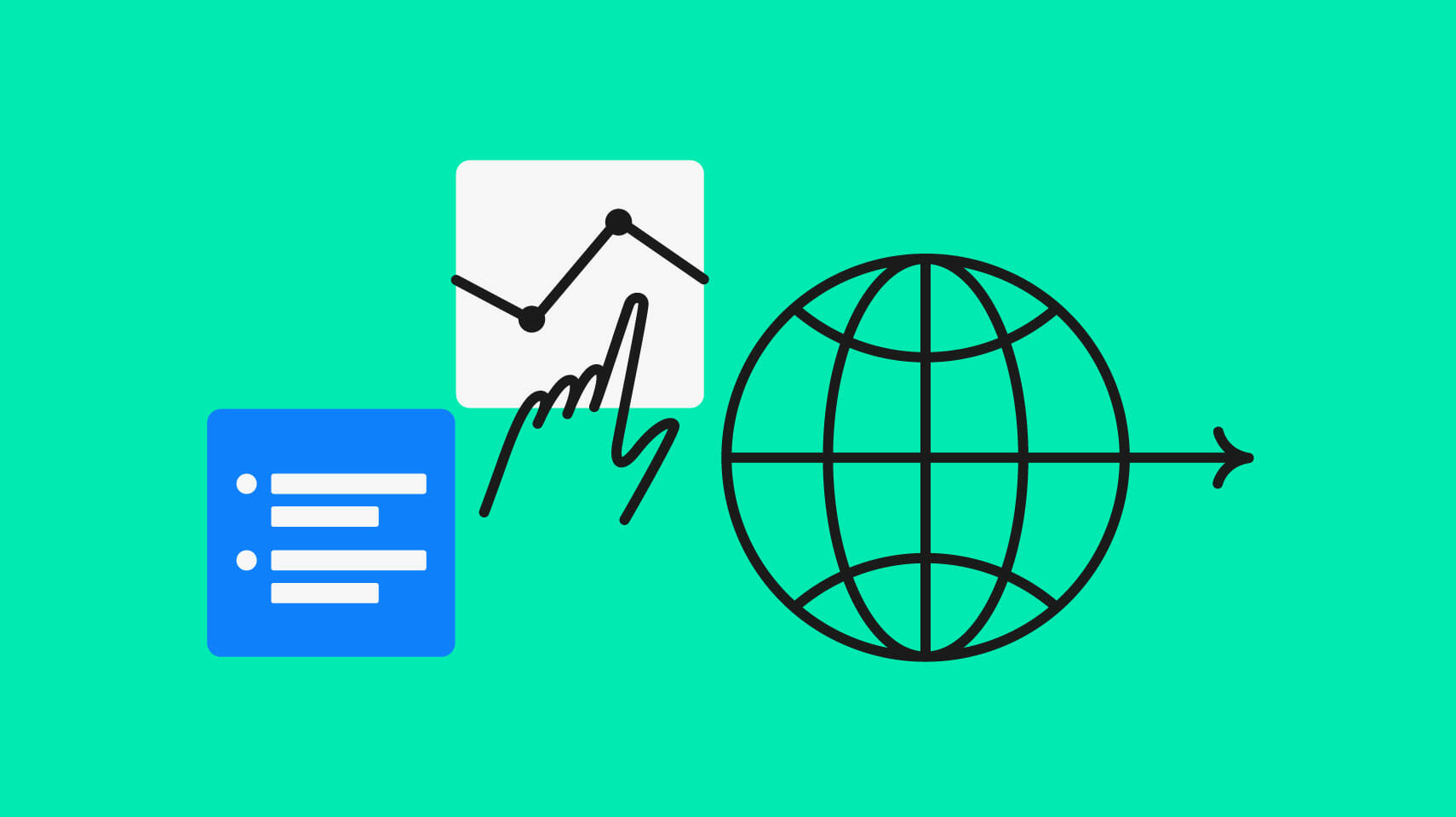Global business
How to Increase App Downloads in 10 Simple Steps

Why people’s phones are stuffed with apps is a question that can keep app marketers up at night. Some say it’s due to a psychological need for saving energy—apps help us accomplish more with less time and effort. Others attribute the success of apps to our constantly-connected lifestyle, which apps enable.
In any case, one thing is certain: We use an average of 46 different apps each month, and this number keeps growing year by year. So the real question becomes: How can you make sure your app is one of those 46 in markets outside your own? This guide will explore how localization can help you increase app downloads.
What’s mobile app localization, and why does it matter?
Mobile app localization is the process of adapting all elements of an app—including the UI, the copy, the layout, the visuals, and more—to a specific market (or "locale").
Localization ensures that an app feels natural and relevant to users in the target market, taking into account cultural differences, legal requirements, and other unique factors that go beyond language.
The main benefit of localizing your app is that it lets you tap into new markets and reach new users who might not be able to use your app otherwise. Engagement and downloads go up when people can use an app in their own language—user experience is king, after all, and tightly related to language.
While the theory behind localization may be pretty straightforward, the process of devising a solid localization strategy, followed by actually localizing the app, can be complex—especially for small and midsize businesses with limited resources. No need to worry, though, we’ve got you covered. Read on for 10 simple steps that will help you increase app downloads through well-executed localization.
Step 1: Do your research
This might sound like a cliched piece of advice, but bear with us—doing your research is key to successful localization. The first step is to identify your target markets and learn as much as you can about what customers really want:
- What are the languages of those markets?
- What do local users want from an app like yours?
- Who are your main competitors in these markets?
- What cultural sensitivities do you need to take into account?
- What are the locally preferred payment methods?
- What local regulations do you need to be aware of?
Research also includes keywords: Getting more downloads for your app is heavily reliant on app store search so it’s important to choose the right keywords for your target markets. We will cover app store optimization (ASO) in more detail later on in this guide.
Step 2: Design locally appealing visuals
Once you have a clear understanding of your target markets, it’s time to start thinking about how to make your app look and feel native to users in each of them.
This is where visuals come in: Everything from your app icon and screenshots to your in-app graphics and videos should be adapted to the local market.
Your app icon is the first thing users see in an app store. They will also see it on featured pages and lists, in category pages, and—if you’re lucky—on social media or in the press. Moreover, once installed, your icon will be displayed on the users’ home screens and in their app drawers.
When designing an icon for a specific market, keep the following in mind:
- Visuals: What colors, shapes, and symbols are popular in the target market?
- Cultural references: Avoid any culturally-insensitive imagery or symbolism.
- Simplicity: A simplified logo that represents your app’s function can help users remember why they downloaded it in the first place.
- Consistency: While you can adapt your icon to each market, make sure it’s still recognizable as your brand.
Step 3: Localize your app store listing
Your app store listing is your chance to sell users on your app, so it’s important to make sure you localize it for each of your target markets. This includes the app name, app description, screenshots, and any other text that appears on your listing—and it’s known as app store optimization (ASO).
Remember the keyword research we mentioned earlier? This is where it comes into play—the keywords you’ve identified for each target market should be included in your app name and description.
When localizing your app store listing, keep in mind that you only have a limited amount of space to work with. Some languages are more verbose than others, so you might need to account for that, too.
Step 4: Localize your app content
Once users download your app, you need to make sure they can actually use it. This means localizing the user interface so that it appears in the local language and uses the local conventions for things like date and time formats, currency, and measurements.
That brings us to the next consideration: Localization goes beyond simply translating text. It also takes into account aspects like local customs, preferences, and expectations. For example, payment methods vary from country to country, so you’ll need to make sure your app can accept the locally preferred payment methods.
Last but not least, localizing your content also includes making sure that any imagery, videos, or other visuals you use are culturally appropriate. For example, you might need to avoid using offensive imagery, including emojis. Did you know that clapping hands implies sexual intercourse in some cultures?
Step 5: Get local reviews and testimonials
Social proof is a powerful tool, and it’s especially important in markets where users might be unfamiliar with your brand. In these cases, local reviews and testimonials can help build trust and convince users to download your app.
Recommendations and reviews are especially important in the app store, where they’re prominently featured on an app’s listing. Positive reviews can help you rank higher in app store search results, which drives more organic traffic to your listing.
Moreover, you can repurpose positive reviews and testimonials on your website, social media, and in other marketing materials. They’re also a great way to interact with users and show that you appreciate their feedback.
Step 6: Invest in paid user acquisition campaigns
Paid user acquisition is a great way to jumpstart your app’s growth in a new market. By running ad campaigns targeting users in the target market, you can generate interest in your app and get it in front of a larger audience.
When planning a paid user acquisition campaign, the research you originally conducted will come in handy to identify the right channels to use. For example, you might want to focus on Facebook or Google ads in some countries and invest in Twitter or Instagram advertising in others.
Step 7: Leverage the power of community
Building a community around your app can help you achieve success in new markets in the long run. Communities provide a way for users to connect with each other, exchange tips and advice, and promote your app to their family and friends.
There are many ways to build a community around your app. You can start by creating a social media channel (Facebook, Twitter, Instagram, etc.) and engaging with users. Facebook groups are also a great way to build a community, as users can join them for free and interact with each other in a more private setting. You can also sponsor or attend local events related to your app or target market.
Partnering up with local influencers is another effective way to build a community around your app. Influencers have a large following in the target market and can promote your app to their followers. This way, you can tap into their existing community and get your app in front of a larger audience.
Step 8: Offer a freemium plan
Offering a freemium plan can be a great way to get users in new markets interested in your app. A freemium plan lets users try out the full features of your app for free, with the option to upgrade to a premium plan if they want more features or access to more content.
This type of plan is especially popular in the app store, where users are more likely to download a free app than one that costs money. And since you’re not asking for payment upfront, users are more likely to give your app a try.
Step 9: Launch a referral program
Referral programs can help you boost downloads and revenue in new markets. A referral program incentivizes users to refer their friends and family to your app. This way, you can tap into the power of word-of-mouth marketing and get more users on board.
When designing a referral program, it’s important to offer attractive rewards that users will actually want, and culture might have a role to play here in terms of what your local user base would find valuable. For example, apart from traditional rewards such as discounts and freebies, you could consider offering experiential rewards such as VIP access to local events.
Step 10: Build a website and a blog for your app
Having a website for your app is a simple but effective way to provide users with more information about your app. A website can also serve as a central location for all your marketing materials, including screenshots, videos, and testimonials.
A blog is a great way to give users valuable insights into how your app works and what it can do for them. You can also use the blog for content marketing, and share posts that target users in the new market you’re trying to reach.
Because both your website and your blog will need to be in the local language, you’ll need to make decisions around things like producing original content vs embarking on marketing localization, what the best website architecture is for a global audience, and so on.
Conquer the world, one app at a time
With these 10 simple steps, you can take your app global and increase downloads, exposure, and revenue in new markets. While there’s no silver bullet for success, a strategic focus on localization is the most sustainable way to achieve it all.





